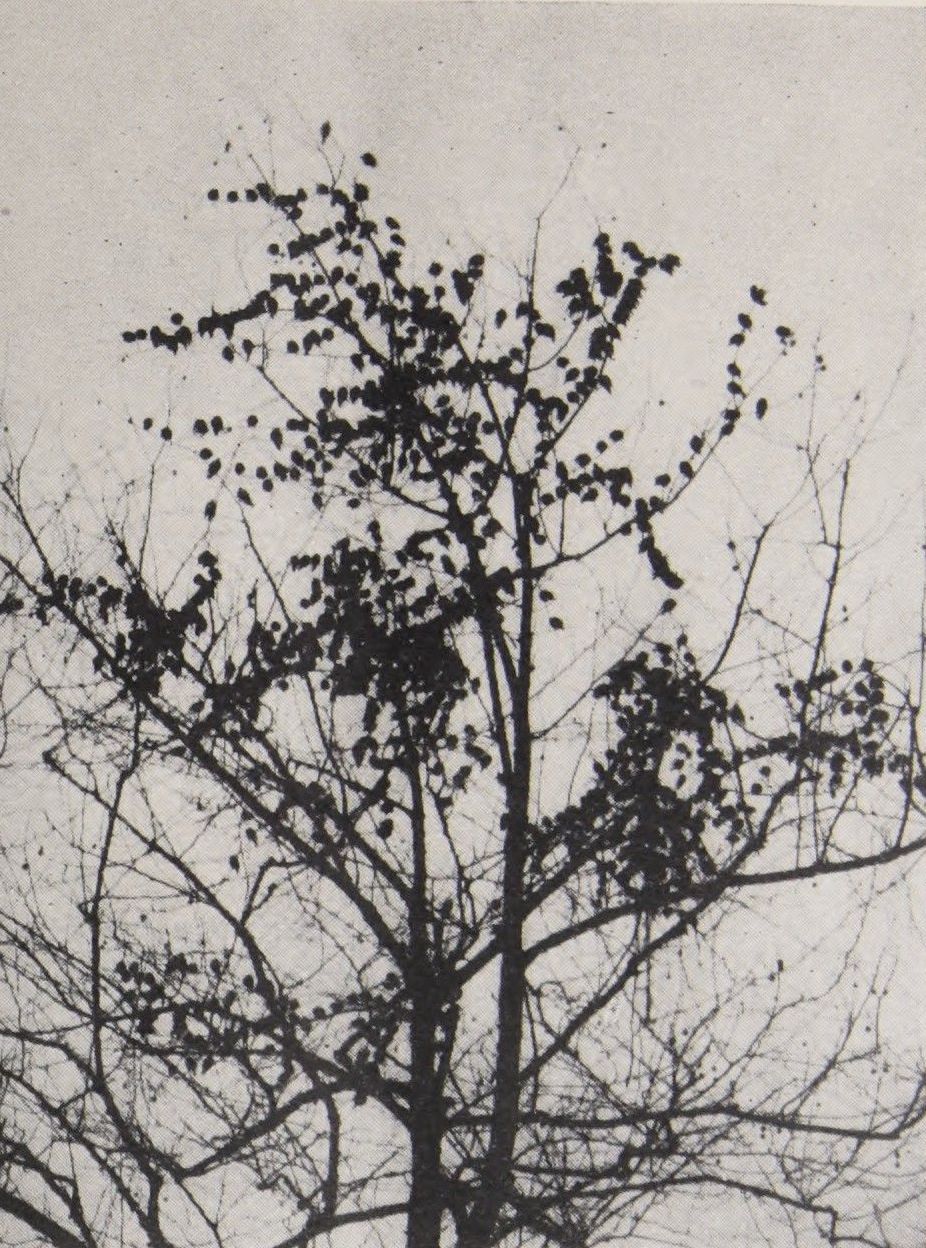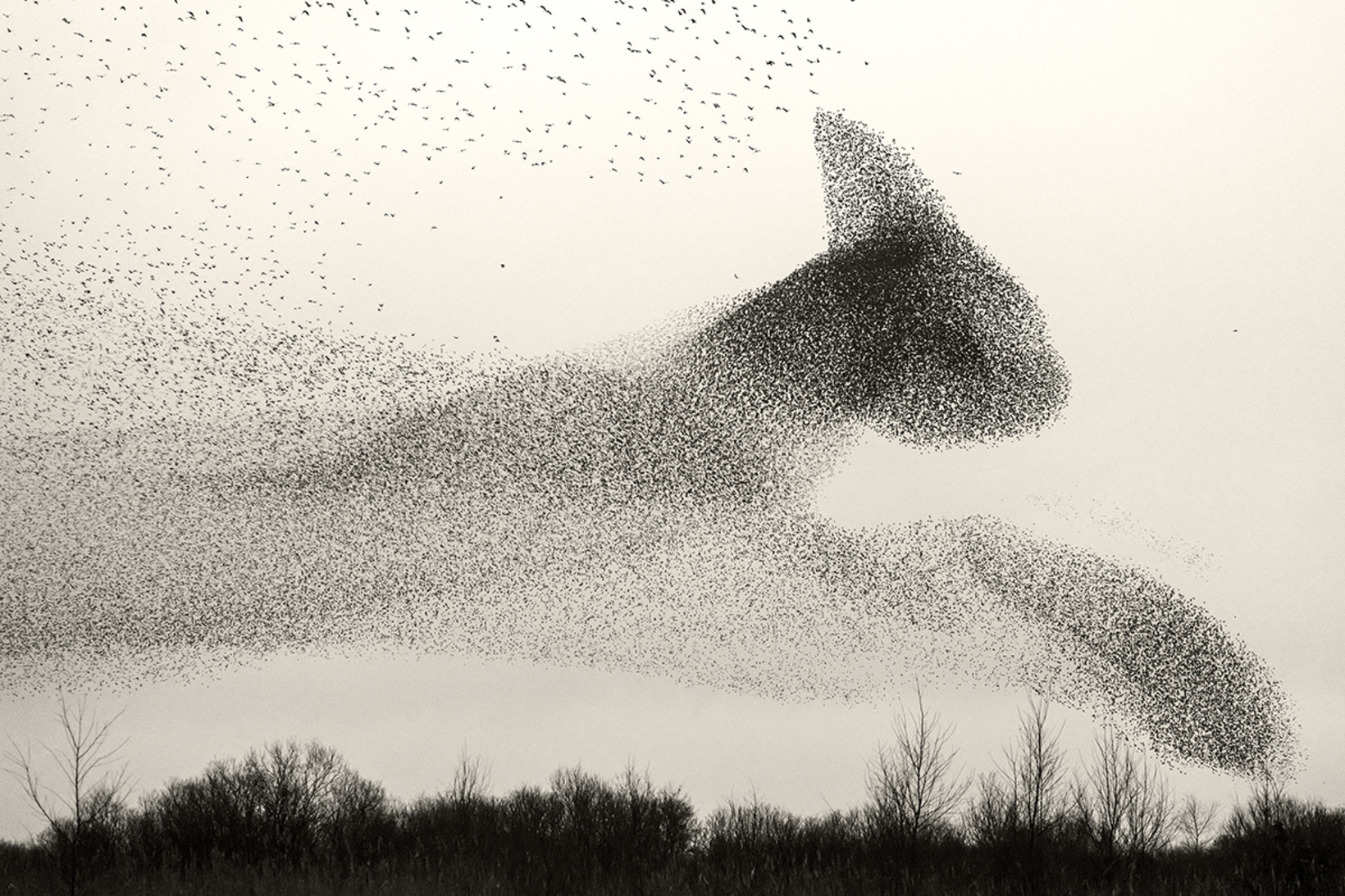Citizen Starling: political and ornithological imaginations of an invasive bird
Natalie Hofmeister
05/14/2024 | Reflections
How the European starling becomes invasive
The European starling is a cosmopolitan bird known as one of the “world’s worst” invasive species.1 But the starling transformed into an invasive species over its first several decades in the US, in part thanks to how ornithologists documented the bird’s expansion. Starting in the 1850s, starlings were released in the US as part of a colonial acclimatization movement, and zoologists of that time claimed a release in Manhattan, NY was the first to establish a breeding population in 1896. When and how these starlings became invasive is the central question in my book project. As the starling expanded through the US, each stage of invasion emerged alongside political projects, such as asserting American ornithology over British or German schools of thought. Here I focus on how one American ornithologist, Frank Chapman, narrates the starling’s early residence in the US from his position as curator at one of the flagship US natural history museums.
A giant in American ornithology, Chapman devoted much of his career to protecting “American” birds, in part through vivid descriptions in natural history magazines. In an 1898 Q&A about the growing starling population, Chapman complained of starlings nesting on the eaves of the American Natural History Museum where he built his career. But over decades, the scientific and political contours of starlings’ significance shift in shape for Chapman and others. In a 1925 article, Chapman considers the starling not simply an annoyance, but a means to secure a tradition of natural history in a changing discipline.
Avian communists and the professionalization of ornithology
In the Progressive Era during a period of socio-political and economic uncertainty, ornithology was becoming a viable profession. As zoological science developed, the number of careers in the field grew, including in the sub-discipline of economic ornithology which deployed zoological science in the service of US economic interests. To demonstrate the value of this emerging scientific discipline, both museum and state ornithologists brought birds into the political and economic transformations of that era. Writing for the magazine Natural History during a period of transformation in ornithology from hobby to profession, Chapman muses that “there are times when the starling makes such strong demands upon our hospitality that even its friends resent its presence.”2 Chapman does not specify who exactly is a friend to starlings: is it Chapman himself, or the native birds that he champions throughout his career? A systematist by training, Chapman usually studied birds in their native range to document their proper distributions.3 The non-native starling mattered little to Chapman’s ornithological research, but did prompt him to reflect on the nature of an ornithologist’s work.
During the interwar period, economic transformation also produced ornithology (and Chapman) as a newly politicized form of scientific knowledge production. Before finding his passion for birds, Chapman worked briefly as a banker, a position that shows up in how he characterizes the starling’s nightly roosting habits: “To the ornithologist such gatherings [of birds] possess great interest, but the tired business man, who has come home to sleep, not to study avian communism, sees in them only a source of noise and filth, and spares no effort to induce the birds to move elsewhere.” After declaring the starling an avian communist, Chapman suggests Roman candles as a method of deterring the birds from roosting nearby. But what Chapman senses about the starling is a product of his own training: once a businessman and now ornithologist, Chapman cares about the starling insofar as its presence enables his own work.

Original caption: “A tree of starling photographed just before sunrise and before the birds started their trip to the suburbs to feed,” from Rachel Carson’s 1939 reprise of Chapman’s case for starling citizenship.
Elsewhere in the article, Chapman reviews state ornithologists’ surveys of the starling’s economic service in eating insect pests. Although Chapman praises their efforts in economic ornithology, Chapman himself is a museum curator; for him, the value of a bird’s life extends beyond its service to the state. And yet the quip about communism seems deliberate, identifying the starling as a political operative.
Labeling the starling as communist helps Chapman to pitch ornithological study as a public good. In the interwar period, fears of communist and socialist immigrants ran high, and many link the construction of invasive species to concerns about immigration.4 Musing on this relationship, Chapman notes that “the direct contact of the starling with man extends far beyond it’s roosting habits. These other relations, however, belong among those ‘imponderables’ which science can neither weigh nor measure. They have to do with the personality of the starling, with its standing as a citizen and as a neighbor.”5
Before it becomes invasive, the starling is an avian communist and a pesky neighbor. But these aspects of the starling fall outside the purview of science, at least in Chapman’s version of ornithology. Yet it is the personality of the starling that lays the groundwork for an invasion biology explicitly motivated by political and economic concerns, even though Chapman’s story predates biological theories of invasion by more than two decades.
The starling as shapeshifter
In contrast to Chapman’s distaste for unruly crowds of starlings, some see other political possibilities in this behavior.6 On their way to nightly roosts, flocks of starlings take to the air in a phenomenon called a murmuration, sometimes even taking the shape of another animal entirely (see below image).

Soren Solkaer, Black Sun #128 [https://www.nandahobbs.com/exhibition/black-sun/artwork/black-sun-128]. Image shows a murmuration of starlings that, viewed in aggregate, look like a pouncing cat. Tens of thousands of birds show up as tiny black shapes against a light background, and even the density of the birds defines the cat’s head as a darker shape against the sky.
In murmurations, starlings become shapeshifters, conjuring a range of political and scientific imaginaries.7 US invasion biology in its present form tends to view these hordes of birds as an ecological and economic threat–not so very different from Chapman’s avian communist. But even more common labels for the starling, like pesky neighbor or invasive species, point to a collective unruliness about the bird.
As an ornithological subject, the starling is difficult to contain. They are notoriously smart birds that can easily dodge and evade common catchment methods like mist nets and walk-in traps. The figurative trap of “invasive species” is more perilous for the starling, and this trap was set by ornithologists even before theories of biological invasion took hold. Today when ornithologists name the starling “invasive,” they rehearse a long-standing and politicized drama over how to name a bird.
Author Bio
Editor's Comments
1. Lowe, S. et al. 2000. 100 of the World’s Worst Invasive Alien Species: A Selection From The Global Invasive Species Database. Invasive Species Working Group.
2. Chapman, Frank M. 1925. “The European starling as an American citizen.” Natural History 25:484.
3. Chapman’s own research focused on endemic birds of Colombia.
4. See, for example, Banu Subramaniam’s work on the nativist and xenophobic rhetoric around invasive species.
5. Chapman, p. 484.
6. I first encountered this idea in adrienne maree brown’s Emergent Strategy (2017), but there is even a journal called Murmurations for systematic and relational therapists.
7. Contemporary natural scientists are fascinated by explaining the scientific basis of murmurations. Much of this work refines algorithms to imitate this complex behavior or speculates about its eco-evolutionary origins. See, for example, Goodenough et al. 2017 (PLoS) or Bialek et al. 2012 (PNAS).
Published: 05/13/2024
